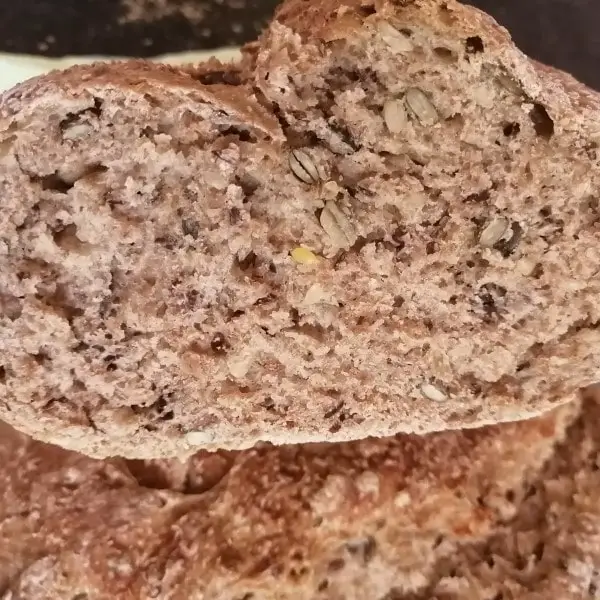The dough is sticky and tacky and will not hold a shape for a long time. The bulk fermentation can go horribly wrong as a result while the proofing will yield an intermediate dough that will eventually hold its shape. This is a recipe for an adventurer who is not scared of taking risks.
What a mouthful! Not only is the name quite a list of healthy ingredients but the finished product is to die for. My wife recently asked for a bread that would deliver more fibre in order to offset the growing presence of bread in our lives. What more could we ask than replacing 40% of the white bread flour with Rye and another 40% with nutty whole wheat, while adding a ridiculous amount of seeds to pack in a punch? Why only 40%? Because I did not think of preparing the starter with whole-wheat flour, which would have made this a 60% whole-wheat – 40% Rye bread. But, there is always next time!
While the bread is certainly healthier than a regular sourdough loaf, one should always remember that rye does contain a particular form of gluten, the protein secalin. However, as long as you are not gluten sensitive, this loaf is bound to delight you. This particular form of gluten, coupled with the amount of gluten makes this dough particularly harder to handle, especially if one opts for a much higher hydration level. If this is your aim, I suggest using a 3-step proofing process to ensure that the final shaping is possible.
Rye flour is denser or heavier than white flour and usually loaves made with this flour will be denser and the loaf will feel heavier. The addition of nutty whole wheat flour also allows for a higher hydration level, making the finished product much more airy and lighter, giving the appearance of an almost normal bread.
Using sourdough starter instead of yeast also adds a wonderful flavour layer, especially if you opt for a long, fridge based proofing stage, which controls the amount of lactic acid being generated. This yields a subtle nutty profile with a touch of sourness that is barely there. A proper canvas which brings the flours and seeds alive.
Finally, the seeds added in create interest. Flax seed have a particular nutty flavour which works well with sourdough while the sunflower and pumpkin seeds are large enough that you get a satisfying crunch while chewing through them.

